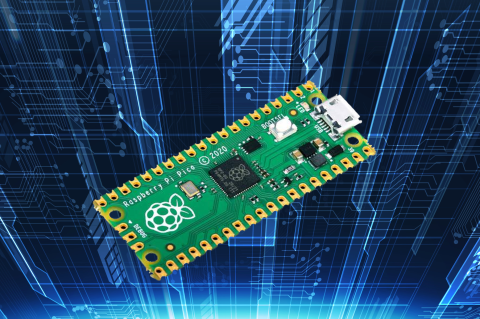Get Ready for Custom Quantum Processor Units

Anytime a company wants to develop at the leading edge of technology, it requires a ton of development from the ground up. In the realm of quantum computing, this is still true; companies that want to operate in this area of technology have to build just about everything from scratch. But today, the industry has taken an important step towards accelerating development of quantum devices.
On 28 March 2022, Dutch company QuantWare announced interested customers can purchase custom 25-qubit quantum processing units (QPU), which they’ve named Contralto. This comes on the back of a July 2021 announcement of a 5-qubit off-the-shelf processor. The company claims a custom Contralto device can be fabricated, packaged, and delivered to customers in only 30 days. It’s a compelling step forward for a budding industry that has potential to solve some of the toughest computational problems.
While the announcement is compelling, as is the idea of quantum devices generally, announcements like this should be evaluated against the current state of quantum technology overall. There are still major challenges to be solved beyond placing qubits on a semiconductor die, but the industry is following the familiar trend seen with classical computers that ultimately leads to standardization and commercialization.
QuantWare’s 25-qubit Quantum Processing Unit
The new Contralto product offering from QuantWare comes in standard packaging that would be needed to interface with today’s quantum computers. This includes an array of coaxial connectors placed on the top of the package to feed RF signals into/out of the system. When we say “standard packaging,” we’re not talking about BGAs or SOIC components; the new processor looks similar to the package shown below.

Just because this product comes in a nice-looking planar package doesn’t just mean you can throw it onto a circuit board. There are some challenges that have to be overcome first:
- You still have to know how to design your quantum circuit with qubits. This is not the typical sequential/combinational logic used in standard processors.
- These devices run at cryogenic temperatures, so your system will need a cryo-refrigeration unit to keep portions of the system at the appropriate temperature.
- The control and readout system needed to probe qubit states is not included. At this moment, none of this is off-the-shelf hardware, it’s all custom-built.
We’re not at the point of buying chips for quantum smartphones just yet, but this represents an important development for the industry, and it shows how quantum processors may follow a similar development and commercialization trend as classical processors.
This all begs the question, what can you do with 25 qubits? Is this a lot of computing power? Frankly, no it is not a lot of computing power compared to today’s server farms or supercomputers. However, access to that much qubit power in a small package makes these chips important R&D tools that help developers build towards much more realistic applications.
Quantum Growing Pains
By any account, the future still looks bright for quantum computing, both in terms of market growth, technology development, and the breadth of applications for these technologies. Current market size estimates range from $830 million to $5 billion by 2024. Wall Street is also jumping into the quantum computing game; some of the best-known quantum computing startups were taken public through billion-dollar SPAC mergers in 2021.
For all the successes over the last several years, ranging from entangled quantum radar to laying the foundations for a quantum internet, there are still skeptics who believe the technology is over-hyped. On the same day as the QuantWare announcement, MIT published an opinion piece entitled “Quantum Computing Has a Hype Problem”, written by well-known physicist Sankar Das Sarma, director of the Condensed Matter Theory Center at the University of Maryland (College Park). Dr. Sarma’s article attempts to bring us back to the reality of current quantum technology by highlighting the challenges in scaling up something like QuantWare’s processor to billions of qubits. In particular, he writes:
|
|
While I broadly agree with Dr. Sarma’s quoted remark, I would object to the idea that quantum technology is all hype and little substance simply because scaling is difficult with the current quantum processor architecture. Imagine if we had that attitude in the 1950s when monolithic integrated circuits were being developed at Fairchild, or again in 2002, when Intel CTO Pat Gelsinger (now CEO) noted that scaling the CPU architecture at the time would produce more heat than a nuclear reactor. Obviously there are scaling challenges, and I don’t think it is fair to extrapolate an infeasible vision of future quantum computers based on scaling challenges that exist today.
Whether you think the technology is over-hyped or you think it’s world-changing, the industry is moving forward with quantum development at impressive speed. So far, the market is dotted with a few big names and a slew of innovative startups. Some of the development tools and industry efforts that support quantum information systems include:
- Quantum programming languages such as Q#, QISKit, and Pytket
- Development of entire quantum application stacks
- Standardization of performance, terminology, and evolution by IEEE, ISO, IEC, and other standards bodies
- Access to quantum computation time on the cloud for application development
As we can see from the above list, all that’s missing is the hardware! Other companies are targeting much higher qubit counts for their processors. For example, IBM’s 433-qubit Osprey processor is due to hit the market this year, and its 1,121-qubit Condor processor is expected in 2023. The million-qubit holy grail of quantum computing is envisioned to occupy as much space as a data center, according to quantum computing startup PsiQuantum.
As computing capabilities develop and become more advanced, Altium Designer® will be there with the design tools you need to stay at the cutting edge. We have only scratched the surface of what is possible to do with Altium Designer on Altium 365. Start your free trial of Altium Designer + Altium 365 today.










